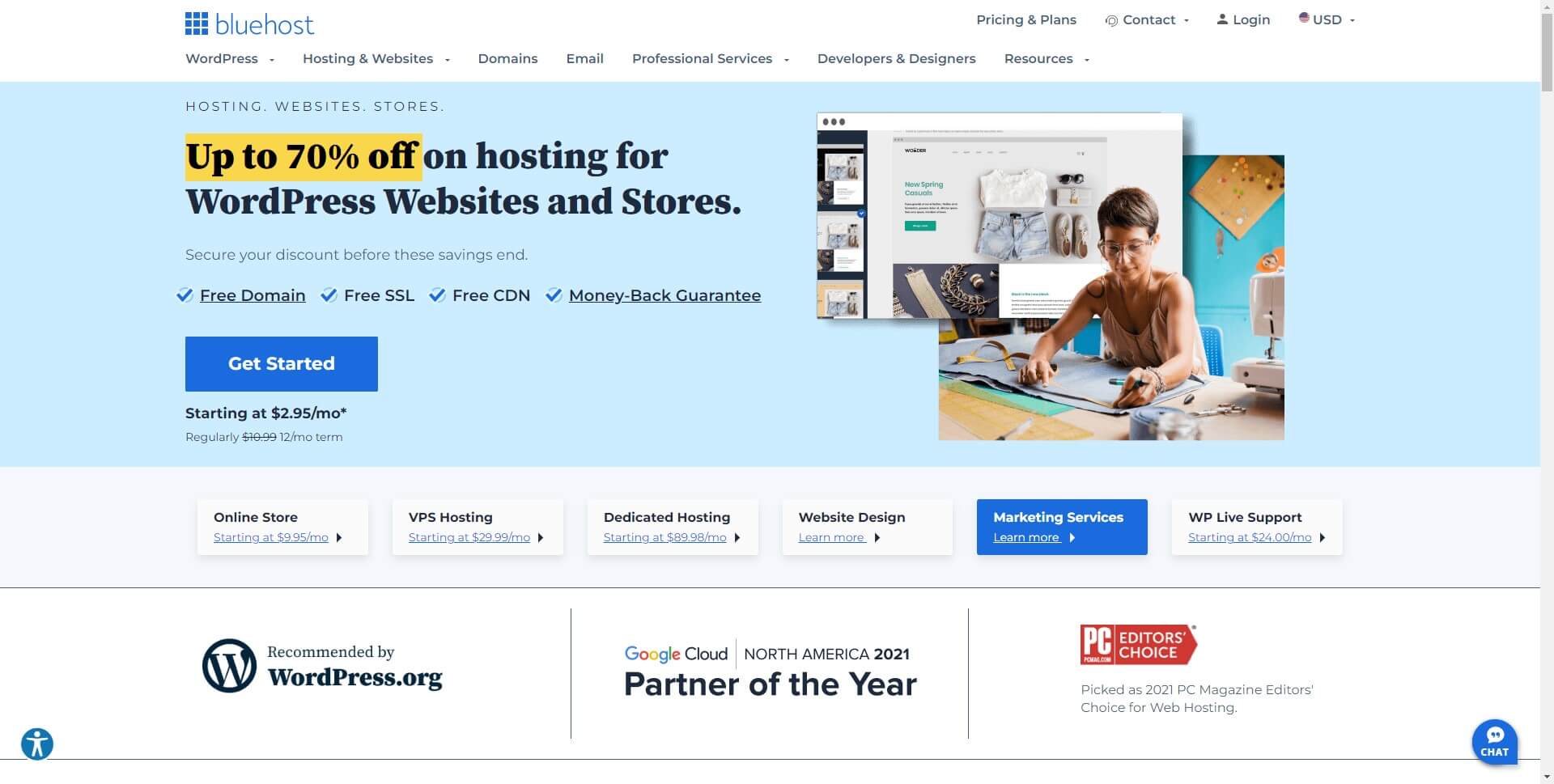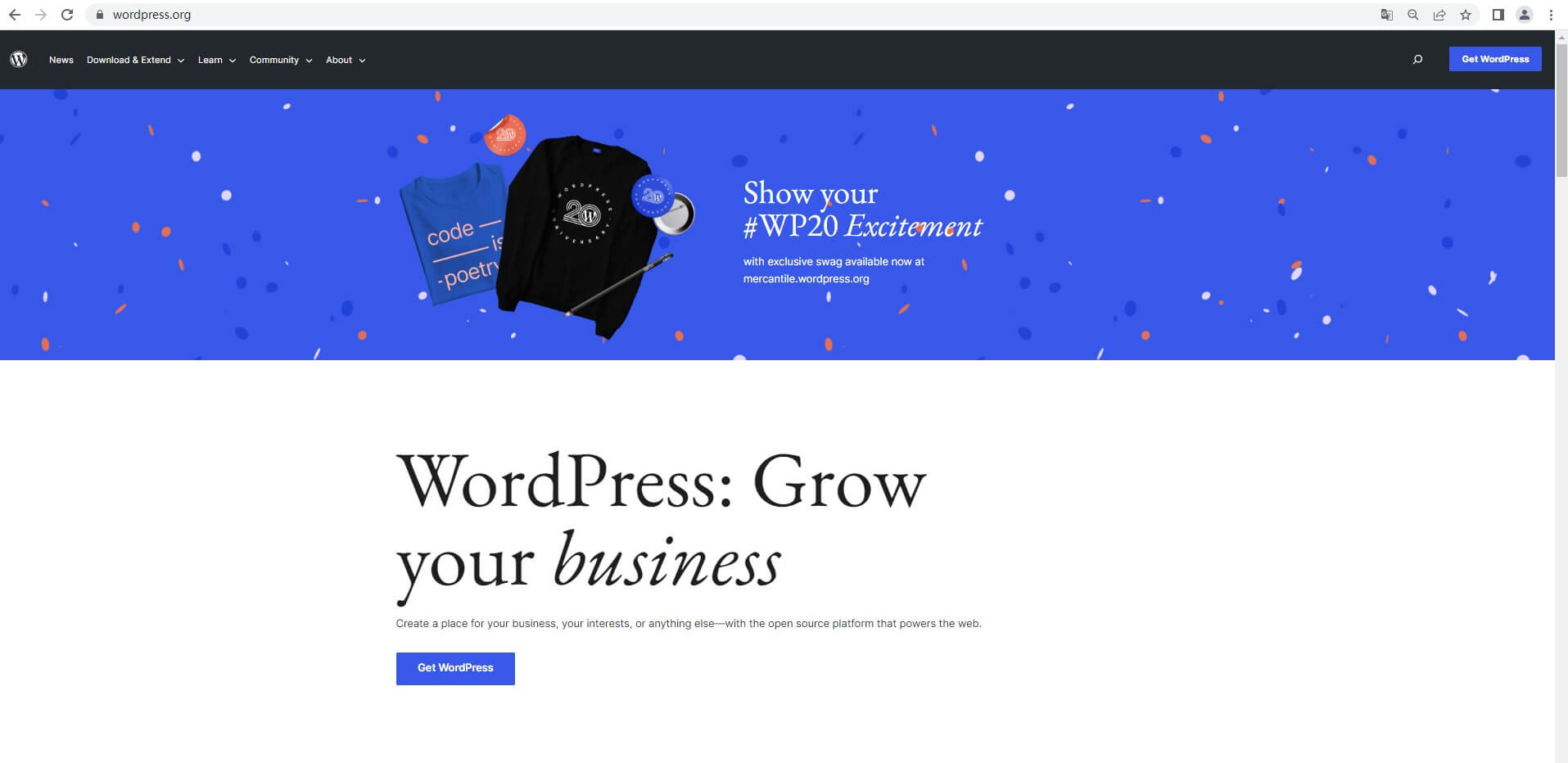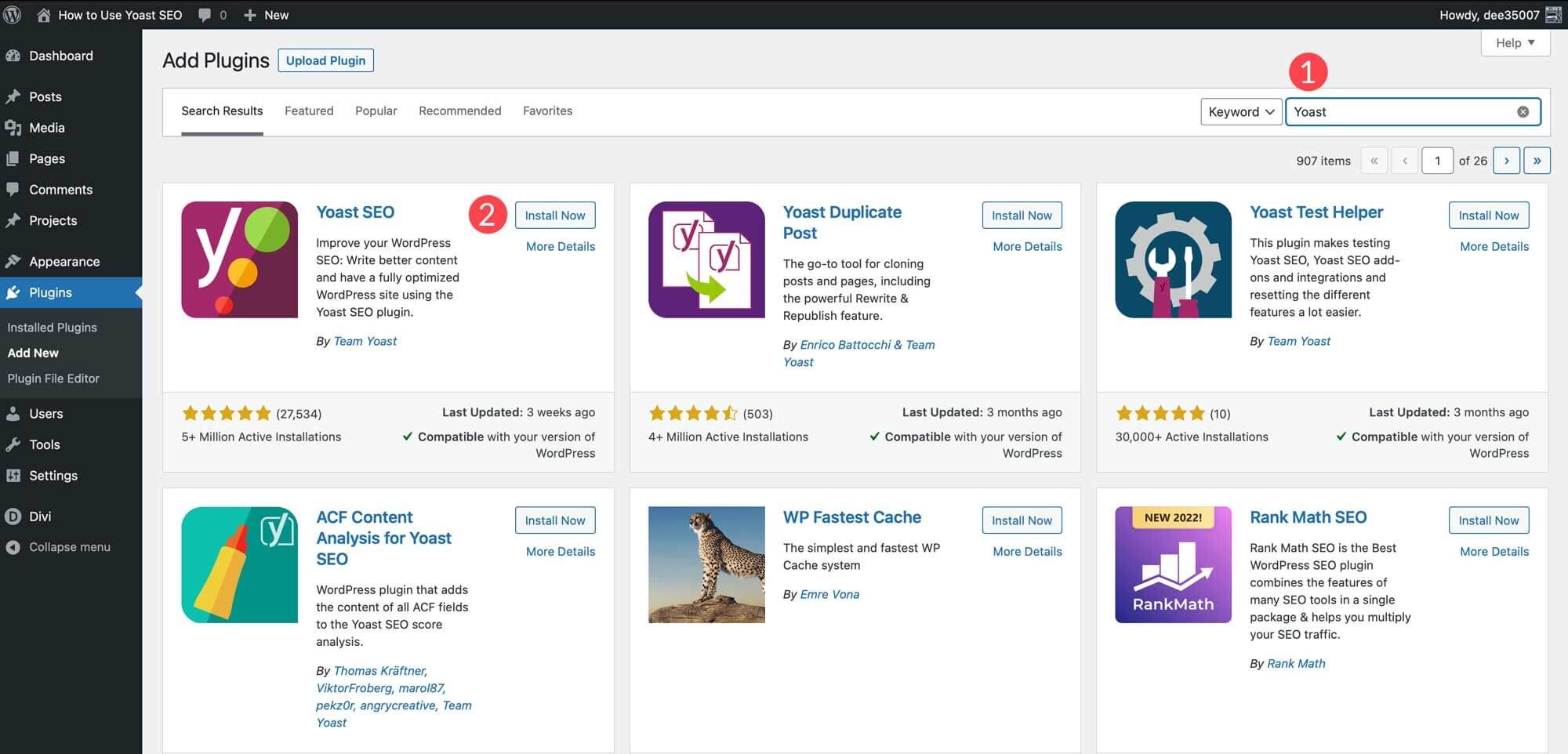How to Make Money Blogging for Beginners: A Step-by-Step Guide Business(2023)
Category: Web Design

12 mins read
Have you ever pondered how bloggers earn income from their blogs? With millions of active bloggers worldwide, blogging has become a popular way for individuals and businesses to connect with audiences and share their message with the world. Beyond being a means of self-expression or social connection, blogging can also generate income for those who know how to leverage their content and audience.
In this article, we'll explore how bloggers can make money through blogging and how Search Engine Optimization (SEO) plays a vital role in achieving this goal. We'll provide practical tips and strategies for beginners to improve their blog's visibility, attract more traffic, and ultimately generate income.
In this article:
- 1. Is Choosing the Right Niche Crucial for Your Blog's Succes
- 2. Essential Steps to Establish Your Blog
- 3. Crafting Compelling Content: What It Takes to Capture Your Audience's Attention
- 4. Search Engine Optimization (SEO) Basics
- 5. Key Strategies for Building a Loyal Blog Following
- 6. How to Turn Your Blog into a Profitable Venture
- 7. From Passion to Profit: How to Manage Your Blogging Finances
- 8. FAQs about Blogging Success
1. Is Choosing the Right Niche Crucial for Your Blog's Success
Choosing the right niche is critical to the success of your blog. A niche refers to a distinct subject or area of interest that your blog will concentrate on. By choosing a profitable niche, you increase your chances of attracting a large and engaged audience, which can lead to more traffic and income.
1.1. The Significance of Niche Selection for Your Blog
Selecting the right niche is essential for the success of your blog. Your niche ought to be a subject that you are both knowledgeable and passionate about. This will help you create high-quality, engaging content that resonates with your audience.
1.2. Top 10 Profitable Niches for Blogging
There are several popular niches to consider when starting a blog, including:
- Health and Fitness: People are drawn to this niche to learn about exercise routines, healthy eating habits, and ways to improve their overall health and well-being.
- Personal Finance: This niche is popular among those seeking to learn about money management, budgeting, investing, and ways to save money to achieve their financial goals.
- Travel: Individuals are drawn to this niche to discover and explore various locations, gain knowledge about unfamiliar cultures, and experience unique and memorable travel opportunities.
- Food and Cooking: The Food and Cooking niche attracts individuals who are passionate about cooking and desire to enhance their culinary skills. They search for information on new recipes, cooking methods, and healthy eating practices to create delicious and wholesome meals.
- Beauty and Fashion: People are attracted to this niche to stay up-to-date on the latest fashion trends, beauty tips, and makeup tutorials.
- Technology: This niche attracts those fascinated by new gadgets, software, and technology trends that can simplify their daily lives and keep them connected to the digital world.
- Personal Development: This niche appeals to those looking for ways to improve themselves and achieve their goals. They seek information on personal growth, self-improvement, and productivity to enhance their lives.
- Parenting and Family: The Parenting and Family niche is favored by parents and families seeking guidance on parenting and strengthening family relationships. They search for information on activities suitable for families, helpful parenting tips, and methods to foster healthy and robust connections with their children.
- DIY and Home Improvement: People are attracted to this niche to learn about DIY projects, home improvement tips, and ways to decorate their home.
- Entertainment and Pop Culture: This niche appeals to those interested in staying informed about the latest celebrity news, movie and TV show reviews, and pop culture trends to keep them up-to-date and entertained. This niche appeals to those interested in staying informed about the latest celebrity news, movie and TV show reviews, and pop culture trends to keep them up-to-date and entertained.
1.3. How to Gauge Your Niche's Financial Viability
When choosing a niche, it's essential to evaluate its profitability and competition. You want to select a niche with high demand and low competition to maximize your chances of success. You can evaluate a niche's profitability and competition by conducting market research, analyzing search volume and competition levels, and identifying gaps in the market that you can fill.
To further enhance your blog's visibility and attract the right audience, the next section will provide you with insights on how to conduct keyword research and discover the most profitable keywords for your niche.
2. Essential Steps to Establish Your Blog
Once you've selected a profitable niche, the next step is to set up your blog. This involves several crucial tasks, including choosing a domain name, selecting a hosting provider, installing a content management system, and customizing your blog's design with themes and plugins.
2.1. How to Choose a Domain Name that Reflects Your Brand and Niche
Your domain name is your blog's online address, and it's essential to choose a name that reflects your niche and brand. It should be memorable, easy to spell, and unique. You can use domain name generators to find ideas and check domain availability.

2.2 Key Factors to Consider When Selecting a Hosting Provider
Your blog needs a hosting provider to store its files and make it accessible on the internet. When deciding on a hosting service, factors such as dependability, speed, security, and assistance should be taken into account. Popular options include Bluehost, SiteGround, and HostGator.

2.3 Why WordPress is the Preferred CMS for Bloggers
A content management system (CMS) such as WordPress is a software that enables you to create, manage and publish content on your blog without needing to know how to code. WordPress is the most popular CMS, and it's easy to use and customize with themes and plugins.

2.4 Essential Plugins Every Blogger Should Consider
Your blog's design is critical to attracting and retaining readers. Themes are pre-designed templates that determine your blog's layout and appearance, while plugins add features and functionality such as social media sharing and search engine optimization. Choose a theme and plugins that suit your niche and brand and customize them to make your blog stand out.

2.5 Designing Your Blog's Unique Look and Feel
Your blog's design is critical to attracting and retaining readers, and customizing your blog's theme and plugins can help create a unique and personalized website that aligns with your blog's branding and user experience. Here are some tips to help you customize your blog's design and functionality:
- Select a theme that is consistent with your niche and brand. Look for a theme that's easy to customize and has features that align with your blogging goals. For example, if you're a food blogger, look for a theme that has a recipe card feature or supports food photography.
- Customize your theme's appearance. Use your blog's color scheme and typography to customize your theme's appearance. You can also add custom CSS to modify your theme's layout and design. For example, you can add custom CSS to create a unique header or footer or modify the size and placement of your blog's images.
- Customize your plugin settings. Most plugins come with settings that you can customize to align with your blog's needs. For example, you can customize your SEO plugin settings to optimize your blog's SEO, or your social sharing plugin settings to align with your blog's social media strategy.
- Choose the right plugins for your blog's goals and audience. Plugins can add features and functionality to your blog, such as social media sharing and search engine optimization. However, it's essential to choose plugins that align with your blog's goals and audience. For example, if you're a travel blogger, you may want to use a plugin that displays your recent travel posts on your blog's homepage.
By customizing your blog's theme and plugins, you can create a unique and personalized website that aligns with your blogging goals and brand. It's important to test your customizations before going live to ensure they function properly and align with your blog's branding and user experience.
Taking these essential steps to establish your blog, including choosing a domain name, selecting a hosting provider, and installing a CMS, and customizing your blog's design and functionality can help you create a compelling online presence. Your blog can attract and engage your target audience with valuable content that reflects your brand and niche.
3. Crafting Compelling Content: What It Takes to Capture Your Audience's Attention
Creating quality content is crucial to your blog's success. It serves as the foundation of your online presence and the primary means of attracting and engaging your target audience. In this section, we'll discuss the importance of valuable content, how to identify your target audience, and the various content formats you can use to reach them.
3.1 Understanding the Importance of Valuable Content
Valuable content provides real value to your audience. It informs, educates, entertains, or inspires your readers, and is essential for building a loyal following. Providing valuable content helps you establish yourself as an expert in your field and foster trust with your audience.
3.2 Why your Target Audience Matters
To create valuable content, you need to know your target audience. This group of people is most likely to be interested in your content, and it's essential to understand their needs, interests, and pain points. By knowing your audience, you can create content that resonates with them and provides real value.
3.3 Exploring Various Content Formats: From Blog Posts to Podcasts
There are many different content formats you can use to reach your target audience, including blog posts, videos, podcasts, and more. Each format has its advantages and disadvantages, so it's important to choose the one that best suits your niche, brand, and audience. For example, if your audience prefers visual content, you may want to focus on creating videos or infographics.
3.4 Tips for Creating Engaging and Shareable Content
Creating engaging and shareable content is essential for growing your blog's audience. Here are some tips to help you create content that resonates with your audience and encourages sharing:
- Focus on providing value: Ensure your content provides real value to your audience and addresses their needs and pain points.
- Use compelling headlines: Craft attention-grabbing headlines that communicate the value of your content.
- Incorporate visuals: Include visuals like images, infographics, and videos to make your content more engaging and shareable.
- Write in a conversational tone: A conversational tone can make your content more relatable and engaging.
- Encourage engagement: Prompt your readers to engage with your content by asking questions, providing a call-to-action, or responding to comments.
3.5 The Power of Consistency: Importance of Content Planning and Execution
Consistency is key to building a loyal following and growing your blog's audience. To achieve consistency, plan your content in advance and establish a regular posting schedule. Content planning helps you stay organized, ensures your content aligns with your goals, and prevents writer's block.
By creating valuable content that resonates with your target audience, using engaging formats and strategies, you can build a loyal following and grow your blog's audience. Consistency and content planning help you stay on track and achieve your blogging goals.
4. Search Engine Optimization (SEO) Basics
Search engine optimization (SEO) is a crucial strategy for boosting organic traffic to your blog. By optimizing your website for SEO, you can improve its visibility and ranking in search engine results pages (SERPs), increasing the likelihood of people clicking through to your site. Effective SEO involves conducting keyword research and selecting the right keywords to incorporate into your content. On-page SEO techniques include optimizing page titles, meta descriptions, header tags, keywords, images, and videos. Off-page SEO strategies include building high-quality backlinks from reputable sources, engaging with your audience on social media, and guest posting on other blogs. Tracking and analyzing your website's SEO performance through metrics such as organic traffic and search rankings can help you identify areas for improvement and adjust your strategy accordingly.
5. Key Strategies for Building a Loyal Blog Following
Building an audience is a crucial aspect of succeeding as a blogger, and there are several strategies you can use to do so. Social media is a potent instrument for connecting with new audiences and interacting with current followers. By creating and sharing valuable content on social media, you can drive traffic to your blog and build a loyal following. Popular platforms for bloggers include Facebook, Twitter, Instagram, and Pinterest. Additionally, email subscriptions are a valuable way to stay in touch with your readers and build a loyal following. By offering exclusive content or incentives for subscribing, you can encourage more people to sign up for your email list. Key tools for managing email subscriptions include MailChimp and Constant Contact.
Networking with other bloggers and influencers in your niche is another effective strategy for building an audience. By collaborating on projects, attending networking events and conferences, and guest posting on other blogs, you can reach new audiences and build relationships with like-minded individuals. Guest posting on other blogs is a valuable way to build backlinks to your site and reach new audiences. Key strategies include researching and pitching guest posting opportunities, creating high-quality content that aligns with the host blog's niche, and building relationships with other bloggers. Additionally, participating in online forums and communities related to your niche can help you build relationships with your target audience and establish yourself as an authority in your field.
6. How to Turn Your Blog into a Profitable Venture
Blogging can be a rewarding way to share your ideas and connect with others. Were you aware that it can also be a lucrative undertaking? In this section, we'll explore the various ways you can monetize your blog and turn your passion into a source of income.
6.1 Maximize Revenue with Display Advertising through Google AdSense
One of the most popular techniques to generate revenue from a blog is through display advertising. By displaying ads on your website, you can earn revenue based on the number of clicks or impressions. For bloggers, Google AdSense is among the most prevalent display advertising networks. By incorporating AdSense ads into your blog, you can maximize your revenue potential and earn passive income.
6.2 Earn Commissions through Affiliate Marketing by Promoting Products and Services
Monetizing a blog through affiliate marketing is also a prevalent approach. By promoting products or services on behalf of other companies, you can earn a commission on any sales that result from your promotion. There are many affiliate networks available, including Amazon Associates and Commission Junction.
6.3 Collaborate with Brands for Profit through Sponsored Content and Partnerships
Sponsored content and partnerships involve collaborating with brands to promote their products or services on your blog. This may involve sponsored articles, product evaluations, or social media advertising. By working with brands that align with your niche and values, you can earn income while maintaining your authenticity and credibility.
6.4 Sell Digital Products: Creating and Selling eBooks, Courses, and Templates
Monetizing your blog through the sale of digital products is another viable option. By creating and selling eBooks, courses, templates, or other digital products, you can earn income while providing value to your audience. Platforms such as Gumroad and Teachable make it easy to create and sell digital products.
6.5 Leverage Your Expertise for Profit by Offering Consulting or Freelance Services
If you have expertise in a particular niche or field, you can leverage that expertise to offer consulting or freelance services. This can include services such as coaching, web design, or content creation. By offering these services, you can earn income while helping others achieve their goals.
Exploring these monetization strategies and finding the ones that work best for your blog and niche, you can turn your passion into profit and achieve financial success as a blogger.
7. From Passion to Profit: How to Manage Your Blogging Finances
As a blogger, it's important to keep track of your income and expenses to manage your finances effectively. In this section, we'll discuss the key steps for tracking your blogging income and expenses.
7.1 Setting Financial Goals
Before you start tracking your finances, it's important to set financial goals for your blog. This includes determining your income targets and creating a budget. By setting clear financial goals, you can better track your progress and ensure that you're making the most of your blogging efforts.
7.2 Tracking and Categorizing Income Streams
To track your blogging income, it's important to categorize your income streams and understand which ones are the most profitable. Bloggers can generate revenue through various channels such as display advertisements, affiliate marketing, sponsored content, and offering digital products or services. By tracking your income streams, you can identify areas for improvement and maximize your revenue potential.
7.3 Managing Expenses and Taxes
As a blogger, you'll also have expenses to manage, such as web hosting fees, marketing expenses, and equipment costs. It's important to track your expenses and keep receipts to ensure you can deduct them from your taxes. By using accounting software and tools, you can streamline the process and stay on top of your finances.
7.4 Building an Emergency Fund and Saving for the Future
Financial stability is crucial for long-term blogging success. It's essential to build an emergency fund to cover unexpected expenses and save for future investments or goals. By setting aside a portion of your blogging income each month, you can ensure you're prepared for any financial challenges that may arise.
7.5 Evaluating and Adjusting Your Financial Strategy
Regularly evaluating and adjusting your financial strategy is crucial for maintaining financial stability and achieving your goals. Review your income and expenses regularly to identify areas for improvement, and adjust your budget and financial goals as needed. This will help you stay on track and ensure that your blog continues to grow and thrive.
8. FAQs about Blogging Success
Q: How long does it take to start seeing success with my blog?
A: The time it takes to achieve success with your blog varies depending on your niche, content quality, and promotional efforts. In general, it's important to be patient and persistent, as building a loyal following and generating income can take months or even years.
Q: How often should I post new content on my blog?
A: The ideal posting frequency depends on your niche, audience, and personal schedule. However, consistency is key, so aim to post at least once a week to keep your audience engaged and maintain your online presence.
Q: Can I start a blog for free
A: Yes, there are several free blogging platforms available, such as WordPress.com and Blogger. However, using a free platform may limit your customization options and monetization potential. Investing in a self-hosted blog and a custom domain can provide a more professional appearance and greater control over your blog.
Q: What are some common blogging mistakes to avoid?
A: Common blogging mistakes include choosing a too broad niche, not posting consistently, neglecting to engage with your audience, and focusing solely on monetization rather than providing valuable content. By avoiding these pitfalls, you can increase your chances of building a successful and profitable blog.
Q: How can I drive more traffic to my blog?
A: To drive more traffic to your blog, focus on creating high-quality content, optimizing your posts for SEO, and promoting your content on social media platforms. Additionally, networking with other bloggers and influencers in your niche can help you reach a larger audience.
Conclusion
Establishing a thriving and lucrative blog requires time, commitment, and persistence. By focusing on creating high-quality content, engaging with your audience, and exploring various monetization strategies, you can turn your passion into a sustainable and rewarding source of income. Managing your blog's finances is an essential aspect of this journey, as it ensures you have the resources necessary to invest in your blog's growth and achieve your long-term goals. With persistence, patience, and continuous improvement, you can build a thriving blog that brings you both personal fulfillment and financial success.
Here we recommend a free blog website builder for you, called FigCube. Create a customizable blog website with a easy-to-use solution from FigCube. Choose a website template and start your free SEO website today!




















